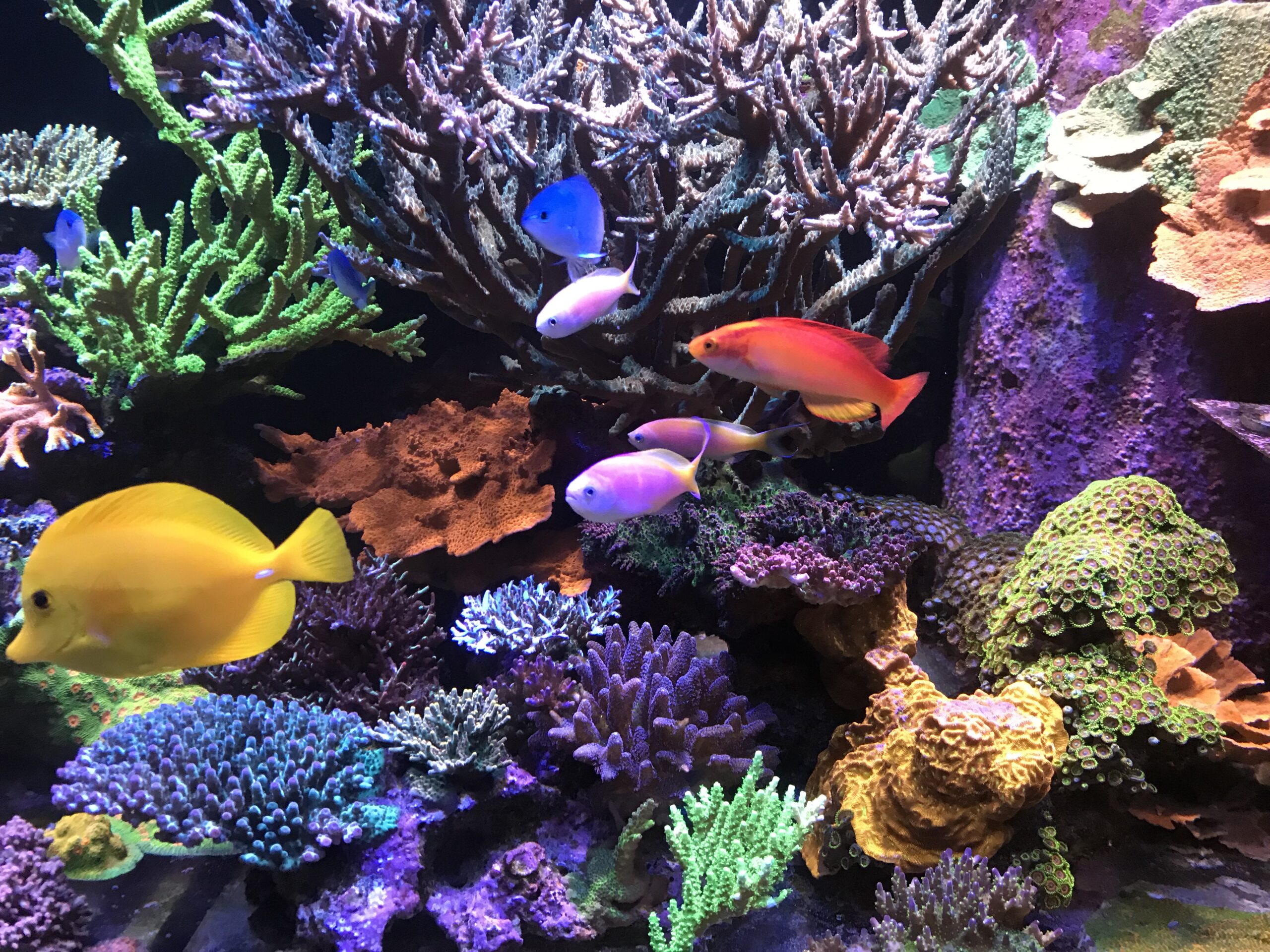When someone finds out that I keep saltwater aquariums they often ask where I get the saltwater from. Obviously, since I do not live by the ocean it is not from there, so they are surprised when I tell them that synthetic seawater is readily available and comes in a bag or bucket.
Since the 1970’s when Instant Ocean first made synthetic sea salt available the hobby has survived and grown exponentially. Fortunately, from that time until now there are numerous companies now making and marketing sea salt for our aquariums. While they all start out with sodium chloride as the base, it makes up 85% of seawater, how they get there and what else they add makes choosing one more complicated than should be expected.
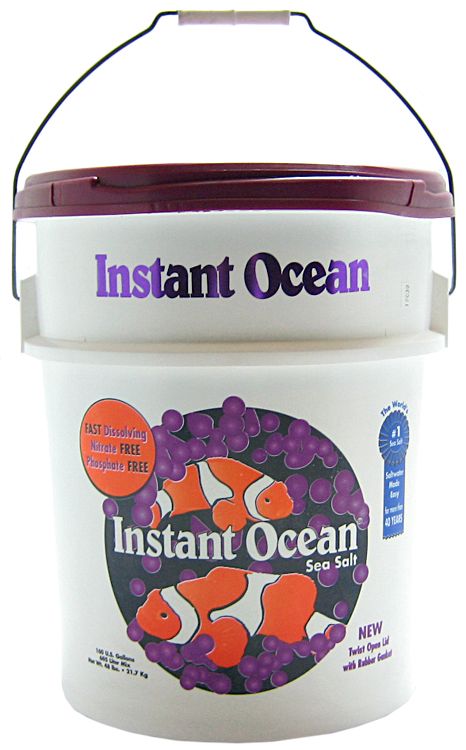
Adding to this is that once a salt is chosen it can be difficult to switch to another salt and is not recommended. It is also not as easy as simply getting a salt that matches the parameters of natural seawater. This is because despite what we’ve heard or may think, a reef tank is not simply a small version of a reef, it is significantly different.
Synthetic seawater
Since few of us live near the ocean and have natural seawater readily available we all rely on artificial or synthetic seawater. It is artificial as it is not simply salt taken from evaporated seawater but instead is a formulation designed to keep captive marine organisms alive.
There have been numerous “recipes” published over the years describing how to make seawater at home. Having tried a few of these over the years in an attempt to save money I have one thing I can pass on about trying this: DON’T. Due to the small volume and chance for error, it was neither successful nor cost-saving. Due to the large scale at which manufacturers make our salt it is a far better and less expensive product.
When choosing which salt to make your own it is necessary to understand that it is the backbone of any successful tank and that all of the success a tank will have starts with using a good salt and maintaining a stable salinity.
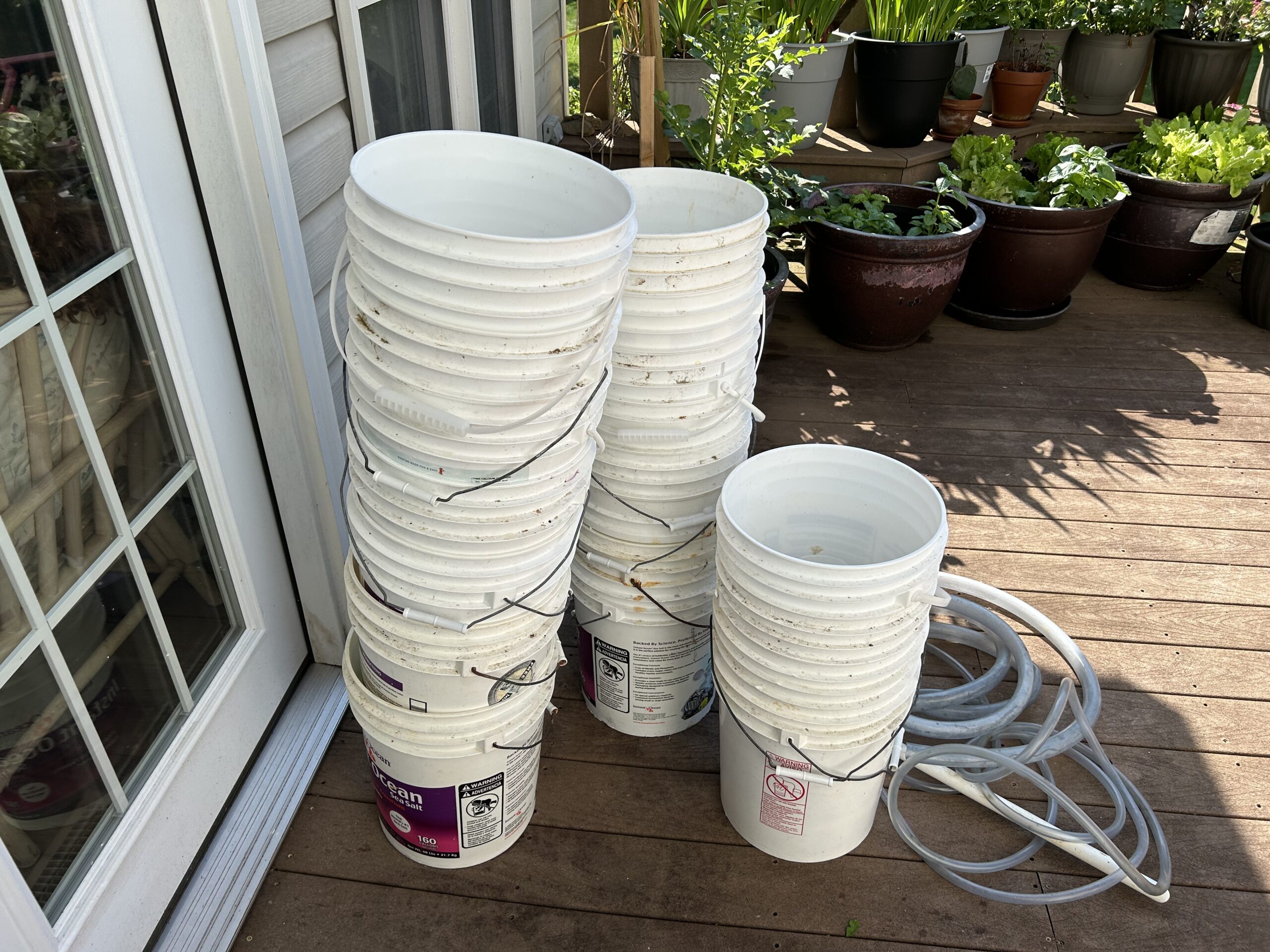
How to choose salt
When choosing a salt a number of factors come into play including cost, availability, your tank’s livestock needs, maintenance schedule, and in my opinion the alkalinity of the salt. The main components of all salts are calcium, alkalinity, and magnesium and these come in a wide range of values in each of the different salts. In addition to these main compounds, salts also contain major and minor trace elements as well as other compounds such as anti-clumping agents and unfortunately impurities.
All of these salts start with sodium chloride as the base, but even this is not the same among manufacturers, as it varies in price along with its impurity level. Obviously the cheaper the source the higher the likelihood that the impurity level is higher. This is another reason that price should not be the ultimate determining factor.
In addition to the purity of sodium chloride being important the quality and purity of the magnesium sulfate and magnesium chloride that are used also significantly affect the purity and cost of the salt as pure forms of these compounds are significantly more expensive than less pure forms. In addition to these compounds, the level of the alkalinity produced by these salts is just as critical, in my opinion. I say that as the range of alkalinity produced by these salts ranges from a high of 13 to a low of 7.
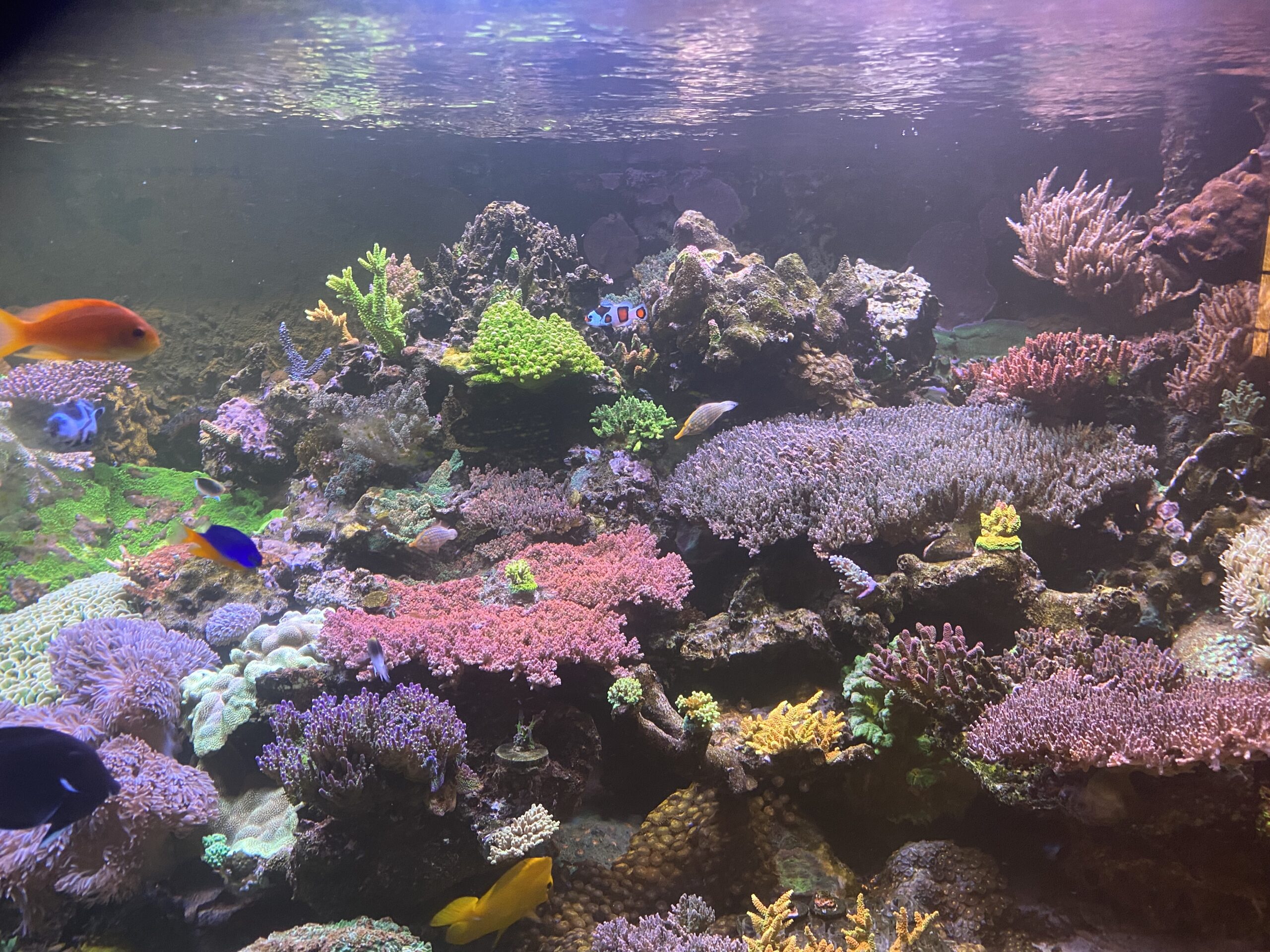
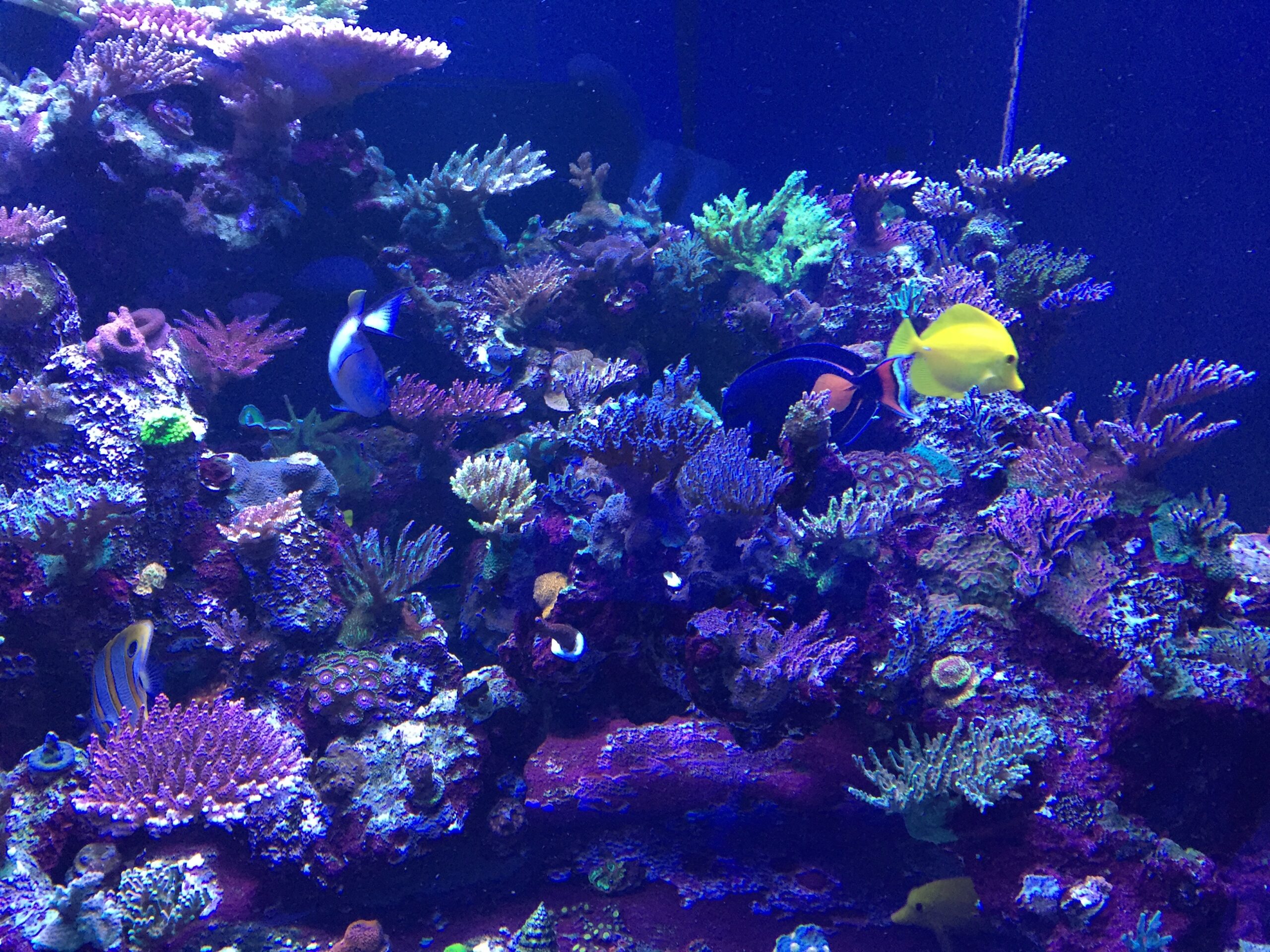
In my experience when a tank experiences a large jump in alkalinity it is usually not a good thing. Therefore, as mentioned above, the salt selected should match as closely as possible to the desired parameters of a tank. So, if the plan is to run a tank with high alkalinity, a salt that has a high alkalinity should be chosen. Conversely, if a tank is planned to be run at a lower alkalinity a salt matching the lower alkalinity should be chosen. But all of this should be decided upon before a salt is chosen, and again it should not be done solely on price.
Lastly, there is one other factor that goes into price that needs to be considered and that is freight. Prior to COVID the freight on large heavy items such as buckets or bags of salt was high. Since then, the price has skyrocketed. If a salt is being manufactured in Europe and shipped to the US or vice versa this will obviously lead to it costing more than a locally or regionally produced salt. This is another reason why price should not be the determining factor when choosing a salt.
I should also point out that last year one of the higher-priced salts was found to be the culprit in wiping out a number of tanks in the US due to a still unknown reason. It was found that the manufacturer had switched manufacturing locales and this new locale introduced a still unknown impurity that was toxic. For this reason, I have stuck with the same salt for almost forty years.
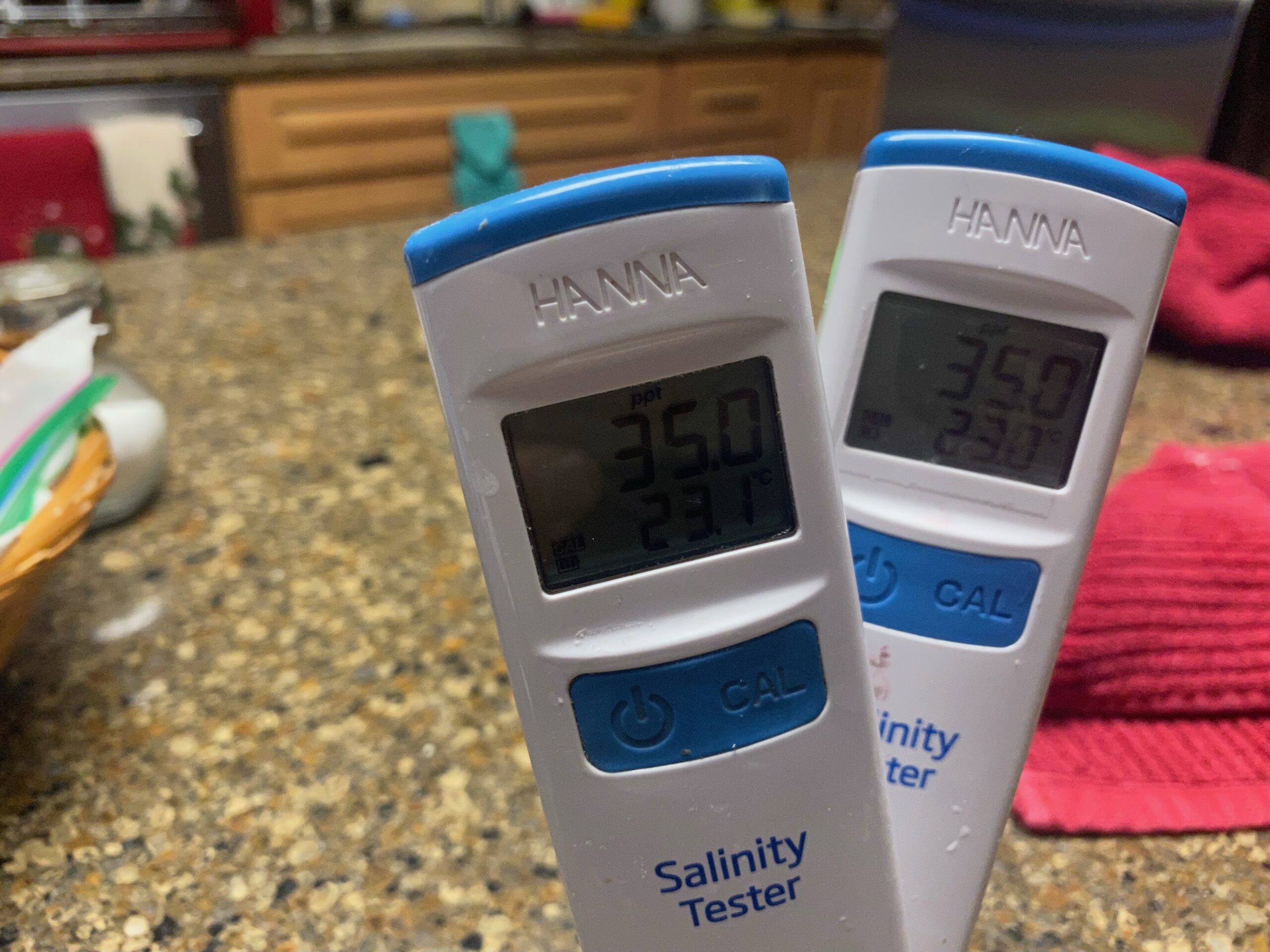
Cost
When two salts look relatively equal, the variable that usually decides which is chosen is cost. But for this to be useful the cost needs to be measured in price per gallon. Unfortunately, the amount of saltwater in a given box, bag, or bucket of salt actually mixes to is often different from what is listed on the container. That is, a bag that says it makes 50 gallons may actually only make 45 at a salinity of 35, but will make 50 at a salinity of 33. So in order for a salt’s cost to be evaluated it needs to calculated to the same.
The easiest way to make this comparison is to weigh out enough salt to make a gallon of saltwater at a salinity of 35 and then divide the total weight of the container, less the bucket or box, by the weight of salt used. This will give a cost per gallon which will then allow for a true comparison between salts. BRS did this evaluation on one of its videos and found that on a gallon-per-gallon basis, there is actually only a small difference between more and less expensive salts so cost should not be as much of a consideration as it often is.
At present, there are at least 35 manufacturers of synthetic sea salt in North America. This makes choosing a salt to meet your needs relatively easy. Some of these manufacturers are very small or have only been in the business for a relatively short time or are not very experienced. Personally, I would stay away from these manufacturers. Besides matching a salt to the desired parameters of your tank and cost what other factors should go into choosing?
First to me is consistency in batches. You do not want a salt that in the first bucket you purchase the alkalinity is 8 and in the next it’s 11. This kind of swing could be disastrous if a large water change is needed. The salt chosen should be the same in every bag and every bucket.
This is why I highly recommend that any time new saltwater is mixed up for a water change, it be tested, at least on alkalinity and calcium, to make sure it is consistent and also to make sure that the levels are not significantly different from those in the tank. This is also true with some of the major trace elements in that if potassium or strontium are significantly too high or too low it can affect the tank’s inhabitants after a water change.
Along with consistency, the level of trace elements the salt contains as well as the impurities it may introduce should also be noted. This purity is often shown by the salt dissolving easily and the new saltwater being crystal clear in 24 hours. If not there may be some impurities in the water. Unfortunately, most manufacturers do not do or show ICP testing or what the results are. Having this kind of data available would greatly improve our knowledge and make choosing a salt much easier and more reliable.
Having said this there is nothing stopping anyone from sending in a sample of a newly mixed salt and noting the results. This kind of information would significantly help in the choosing of a salt. Especially since most manufacturers tout how their salt is the best, purist, or most consistent. Along with minor impurities, some salts contain anti-clumping agents, that act to keep the salt from clumping when it is exposed to moisture. The effects of these agents on most marine invertebrates is unknown.
Some salts also produce brown residue when the salt is mixed, which stays in the mixing container. If new saltwater is constantly mixed in the same container over time, a significant amount of this “sludge” can accumulate. The effect of this sludge is unknown, but since it remains in the mixing vessel the point is probably moot. While it is harmless, it is a bit of a hassle to have to continually remove it from the mixing vessel.
It should also be noted that newly mixed synthetic seawater should not be added to a tank as it is caustic to many delicate invertebrates. Instead, it should be held in an aerated container for at least 24 hours before being used.
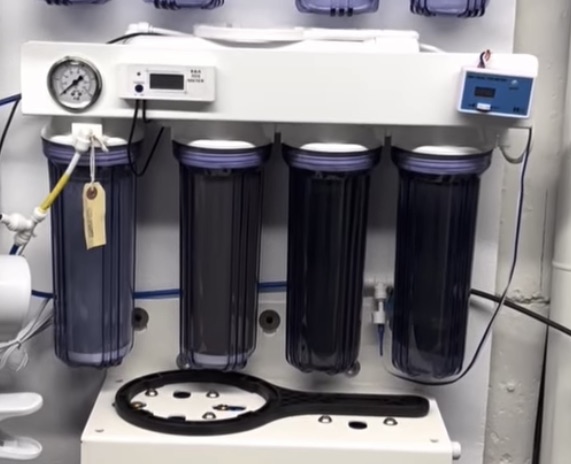
Don’t switch
Once a salt is chosen there should not be frequent switching to other salts. This is because even if they look to be similar, all salts differ from one another, and switching leads to instability which needs to be avoided. If a switch is made, however, it should be done over time, at least a month or so starting with small amounts in the water change, say ten percent, with an additional ten percent added in with each change. So, it will take ten water changes until the change contains a full 100% of the new salt. This may seem slow but keeping things stable is a fundamental rule of everything in a reef tank.
When starting a new tank, price is often the determining factor in a lot of areas, but when it comes to choosing a salt there are a number of factors that need to be looked at. While cost should be a factor, when examined closely the cost per gallon when using the most expensive salt versus a middle-priced one is very small.
Therefore, I strongly suggest that when selecting the salt for your system do not let price be the major determining factor, but instead select a salt that most closely matches the parameters you plan on keeping your tank at. In the long run, this will increase the stability of the system, reduce the need to have to make changes and adjustments and increase the health of the system. One other suggestion is to look at successful tanks and find out which salt they are using and what their parameters are. This is a good first way to get help to be successful.
Values of the Major Elements in 15 Salt Mixes
| Brand | Alkalinity | Calcium | Magnesium |
| Aquaforest | 8 | 450 | 1390 |
| Brightwell | 7.5 | 413 | 1290 |
| Coralife | 11 | 560 | 1380 |
| D-D | 9.8 | 440 | 1340 |
| ESV | 9 | 450 | 1400 |
| Fritz | 8.5 | 425 | 1350 |
| Instant Ocean | 11 | 400 | 1350 |
| Kent Marine | 8.5 | 540 | 1200 |
| Red Sea | 8 | 430 | 1310 |
| Red Sea Pro | 12 | 465 | 1390 |
| Reef Crystals | 13 | 490 | 1440 |
| Seachem | 10 | 540 | 1450 |
| Tropic Marin Classic | 10 | 375 | 1230 |
| Tropic Marin Pro | 7 | 430 | 1450 |
| Two Little Fishes | 8 | 420 | 1300 |


